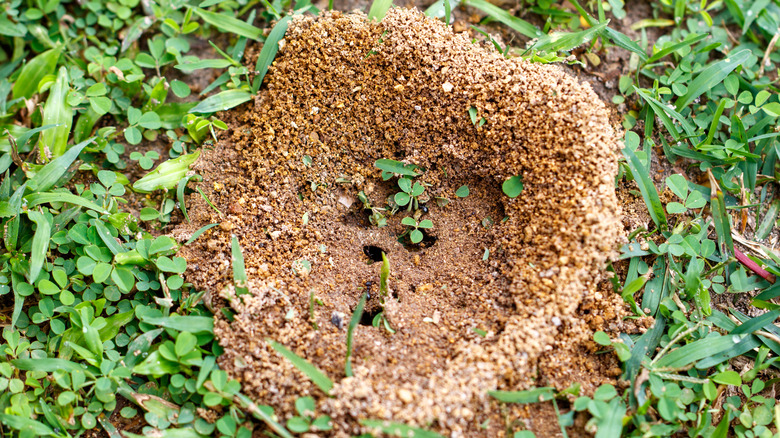The Myth of Using Club Soda to Eliminate Ant Hills
Step outside on a sunny morning and you might notice them: small mounds of displaced earth scattered across your lawn, resembling tiny landmines. At first glance, they may seem harmless, but as they multiply, they can become a real nuisance. If you’ve browsed DIY lawn care forums or chatted with neighbors, you might have come across an unusual solution for ant hills—club soda. This bubbly drink, often used in cocktails or to clean stains, is sometimes suggested as a remedy for ant infestations. While it sounds like a quirky hack, some gardeners claim it works.
However, the truth is that club soda is not a reliable method for eliminating ant colonies. Although some homeowners swear by it, it’s unlikely to fully eradicate a large infestation. The idea is that when poured into the mound, the carbonation creates bubbles that displace oxygen in the tunnels, suffocating the ants. But ant colonies are complex systems that extend much deeper than a single can of soda can reach. Even if some ants near the surface are affected, the majority of the colony will remain unharmed. This means that instead of solving the problem, the trick may only anger the ants, prompting them to relocate their hill nearby and cause more damage to your yard.
The lack of scientific backing and inconsistent results make this method more of a myth than a magic trick. So, what are better alternatives?
Understanding Fire Ants and Their Mounds
Not all ants build visible mounds. Some species, like fire ants, create large, loose hills that don’t have a clear surface entry point. Identifying these mounds is crucial because they require different treatment methods. The theory behind using club soda suggests that the carbon dioxide from the fizzy drink could travel through the tunnel system, displacing oxygen and suffocating the queen. Without the queen, the entire colony should collapse. However, in reality, the amount of carbon dioxide produced by a standard bottle of club soda is insufficient to affect the entire colony.
This means that while club soda might have a minor impact on surface-level ants, it won’t address the deeper parts of the colony. For a more effective solution, consider other methods.
Effective Alternatives to Club Soda
If club soda doesn’t work, boiling water is a common alternative. While it may seem counterintuitive, especially after trying carbonated drinks without success, boiling water has been shown to be effective. The key is to pour enough water to cover the entire underground network of the ant hill. However, this method only affects the ants that come into direct contact with the hot water, so it requires careful application.
Another natural option is diatomaceous earth. This fine powder is made from fossilized algae and works by dehydrating the ants. It’s safe for humans and pets but harmful to insects. Diatomaceous earth is particularly useful for those looking for eco-friendly solutions to ant problems.
Choosing the Right Approach
When dealing with ant infestations, it’s important to understand the specific type of ant you’re facing and the size of the colony. Simple home remedies like club soda may offer temporary relief, but they are rarely a long-term solution. Boiling water and diatomaceous earth provide more consistent results, though they also require effort and precision.
For those interested in learning more about lawn care and pest control, there are plenty of resources available. From expert tips to DIY guides, there’s always something new to discover when it comes to maintaining a healthy yard. Whether you’re tackling ants or other pests, staying informed can help you make smarter decisions for your outdoor space.
